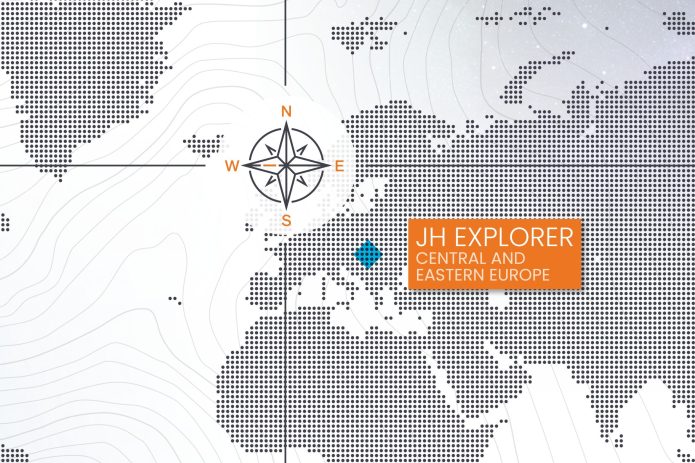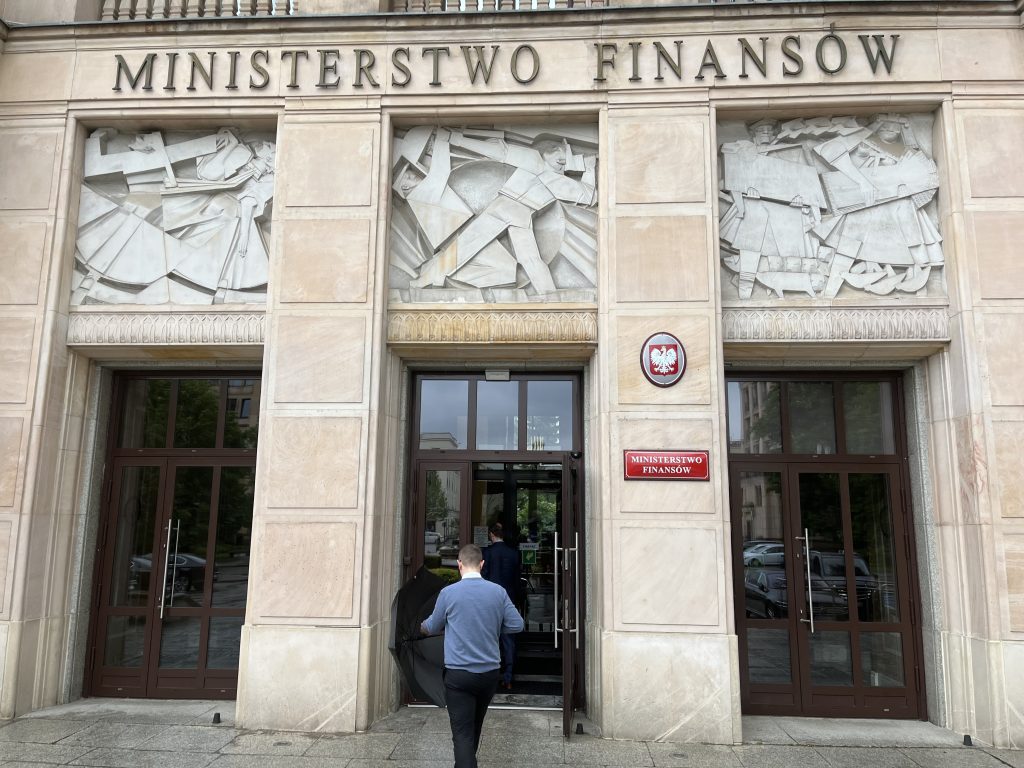Subscribe
Sign up for timely perspectives delivered to your inbox.
Portfolio Manager Sorin Pirău from the Emerging Markets Debt Hard Currency Team outlines the challenges and opportunities for major regional hard currency bond issuers Hungary, Poland and Romania.

| The JH Explorer series follows our investment teams across the globe and shares their on-the-ground research at a country and company level. |
Countries in Central and Eastern Europe (CEE) have historically represented an attractive hunting ground for investors in hard currency emerging market bonds.1 These countries, which became European Union (EU) members between 2004 and 2013, have undergone a spectacular socio-economic transformation, reflected in their improved rating (they are all now investment grade), the development of their financial markets and their increased reliance on domestic funding.
With six CEE countries now part of the eurozone, regional US dollar (USD) denominated bond issuance has understandably diminished. This has left Hungary, Poland and Romania as the only notable issuers of USD bonds in the region.2 Collectively, they now account for almost 7% of the USD EMBIGD bond universe.3
Eager to glean a holistic understanding of the common challenges and opportunities facing these three countries – all of which share a border with war-torn Ukraine – we recently visited these countries to speak with key public sector officials and private sector representatives.
Hungary, Poland and Romania are in line to benefit significantly from the Recovery and Resilience Fund (RRF), the largest operational programme under “Next Generation EU”, the EU’s €800bn economic recovery package designed to support member states’ recovery from the Covid-19 pandemic. Poland is eligible to access more than €35bn in grants and loans; Romania over €29bn and Hungary around €15bn.
However, they are experiencing difficulties accessing the much-needed funds. The first RRF disbursement for Hungary has been suspended until it fulfils 27 “super milestones” relating to judicial independence, rule of law, anti-corruption and protection of the Union’s budget. While it is not expected that Hungary will risk losing access to these funds, little clarity was forthcoming from officials we met with on the exact implementation timeline or why the process has dragged on for so long.
In Poland, the first payment of €4.7bn under the RRF is currently blocked due to disputes around judicial independence and the rule of law. These disputes are unlikely to be resolved before general elections scheduled for later this year.

Romania, meanwhile, has submitted two payment requests and has had one already disbursed. However, further reform milestones, including pension reforms, need to be fulfilled before subsequent tranches are unlocked.
While discussions are underway at the EU-level as to whether the “tight” mid-2026 deadline to implement RRF-funded projects can be extended, countries are already pre-financing these investments based on the expectation that the funds will come at a later stage.
Poland’s election in late 2023 is expected to be fiery. The ruling Law and Justice party will attempt to win a third consecutive mandate, while the opposition, headed by the Civic Platform, maintains that this is the country’s last chance to avoid a complete takeover of state institutions by the ruling party. Both camps will likely commit to further fiscal loosening in the belief that almost any cost is worth bearing to emerge victorious. The only clear expectation on the ground was that no party will be able to form a government alone, and whatever coalition emerges will be weak and beset with conflicts, and thus unlikely to complete a full four-year mandate.
This is in contrast to Romania, where the current grand coalition between the liberals and the social democrats is expected to remain in power after elections scheduled for late next year, providing an unprecedented degree of political stability at the expense of democratic erosion given the apathy voters have developed for politics (the turnout at the last general elections held in December 2020 was only 32% and is not expected to improve by much next year).
Given the busy political calendar in Romania and Poland, the energy vulnerability of Hungary, and the debt servicing impact of rising borrowing costs across the region, fiscal deficits will likely remain difficult to tame.
Hungary, for example, has had to raise its deficit forecast for 2023 from 3.5% to 3.9% of GDP. In Poland, which has a deficit target of 4.7% of GDP for 2023, more fiscal loosening is expected. Romania, meanwhile, is already subject to the Excessive Deficit Procedure and will likely struggle to achieve its 4.4% deficit target for 2023 given revenue headwinds in the first quarter of 2023 and increasing spending pressures. Anecdotally, on the same day we were in Bucharest, the teachers’ unions announced a general strike demanding higher pay, while lawmakers approved a €1bn deal to buy 54 battle tanks from the US, part of a wider pledge to increase defence spending from 2% of GDP to 2.5%.
In our view, elevated deficits, along with a potential delay in EU funds, will translate into a rising supply of government bonds. Consequently, we expect the trio’s combined weight in the USD EMBIGD benchmark (almost 7% as of 31 May 2023) to rise even further.
A positive, re-emerging focus is on the benefits associated with the restructuring of global value chains and the regionalisation of foreign direct investment flows (so-called “nearshoring”), as well as likely opportunities arising from Ukraine’s eventual post-war recovery and reconstruction.
Poland and Romania are both making efforts to position themselves as hubs for rebuilding efforts. Romanian authorities are especially hopeful that the ongoing EU-funded infrastructure build-up will help ease some of the structural problems in the current account deficit.
Hungary is also ostensibly keen to contribute to Ukraine’s reconstruction, but doubts abound on the prospect of Hungarian companies winning tenders in Ukraine given Budapest’s position on the war, its continued energy sector cooperation with Russia and its spat with the EU.
Foreign Direct Investment: Foreign direct investment (FDI) is the category of international investment that reflects the objective of obtaining a lasting interest by an investor in one economy in an enterprise resident in another economy.
GDP: The value of all finished goods and services produced by a country, within a specific time period (usually quarterly or annually). It is usually expressed as a percentage comparison to a previous time period and is a broad measure of a country’s overall economic activity.
Debt-to-GDP ratio: The debt-to-GDP ratio is the metric comparing a country’s public debt to its gross domestic product (GDP).
Fiscal policy: Connected with government taxes, debts and spending. Government policy relating to setting tax rates and spending levels. It is separate from monetary policy, which is typically set by a central bank. Fiscal austerity refers to raising taxes and/or cutting spending in an attempt to reduce government debt. Fiscal expansion (or ‘stimulus’) refers to an increase in government spending and/or a reduction in taxes.
Monetary policy: The policies of a central bank, aimed at influencing the level of inflation and growth in an economy. It includes controlling interest rates and the supply of money. Monetary stimulus refers to a central bank increasing the supply of money and lowering borrowing costs. Monetary tightening refers to central bank activity aimed at curbing inflation and slowing down growth in the economy by raising interest rates and reducing the supply of money. See also fiscal policy.
1 The definition of CEE used here is the one employed by INSEE (The National Institute of Statistics and Economic Studies), and comprises Estonia, Latvia, Lithuania, Czechia, Slovakia, Poland, Hungary, Romania, Bulgaria, Croatia and Slovenia.
2 Croatia has only one short bond outstanding, maturing in 2024, and is expected to exit the benchmark USD EMBIGD bond universe sometime in the second half of 2023 .
3 The JP Morgan Emerging Market Bond Index Global Diversified (EMBIGD) is a uniquely weighted USD-denominated emerging markets sovereign index.
There is no guarantee that past trends will continue, or forecasts will be realised.
Fixed income securities are subject to interest rate, inflation, credit and default risk. The bond market is volatile. As interest rates rise, bond prices usually fall, and vice versa. The return of principal is not guaranteed, and prices may decline if an issuer fails to make timely payments or its credit strength weakens.
Emerging market investments have historically been subject to significant gains and/or losses. As such, returns may be subject to volatility.